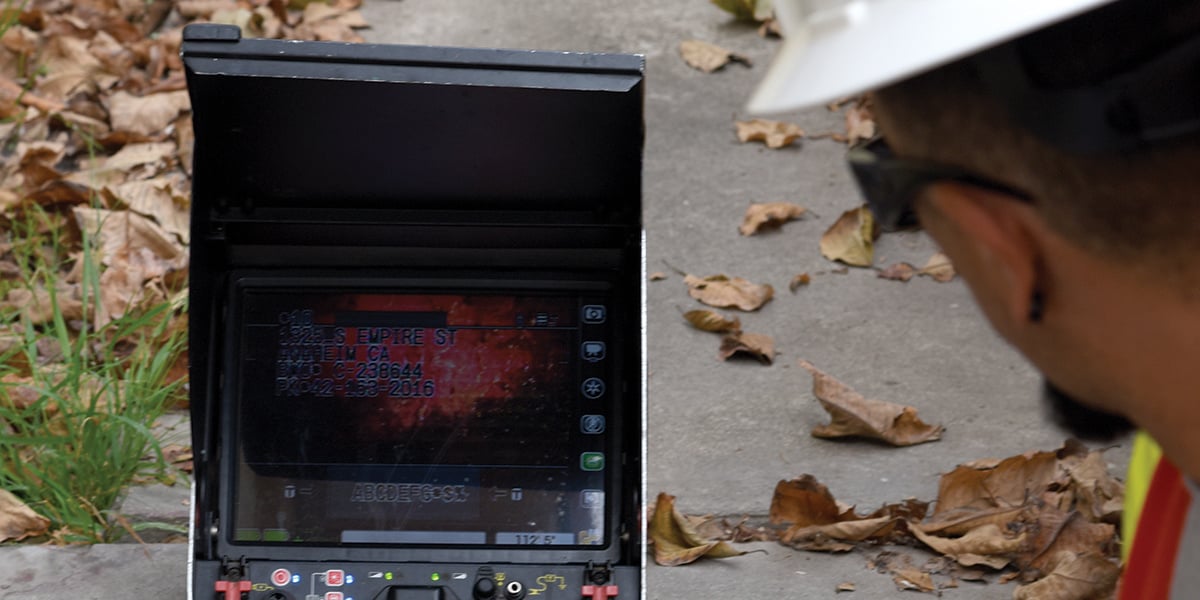The Role of Cross Bore Inspections in Preventing Property Damage

Cross bores, where newly installed utility lines unintentionally intersect existing underground pipelines, pose a significant risk to the safety and integrity of critical infrastructure. For municipalities, utilities, engineering firms and contractors—particularly those using trenchless methods like horizontal directional drilling (HDD)—cross bores can lead to severe consequences, including property damage, service disruptions and environmental hazards. By implementing regular cross bore inspections, these entities can prevent costly damages, improve safety and maintain the reliability of underground utilities.
Understanding Cross Bores
For utility companies and contractors, cross bores are particularly dangerous because they can go unnoticed for long periods. This is especially true in densely populated urban environments or areas with aging infrastructure. Cross bores can damage not only the pipelines but also public and private property, causing massive disruptions to daily operations and endangering public safety. Gas leaks, sewer overflows and water contamination are just a few of the potential outcomes.
Consequences of Undetected Cross Bores
The consequences of undetected cross bores are substantial, particularly for municipalities and utilities responsible for providing essential services. Gas leaks can cause explosions, putting both public and private property at risk. Water line cross bores can lead to contamination, causing health hazards for communities. These risks are compounded when multiple utilities run in close proximity, as a cross bore can create cascading failures that disrupt gas, electric, telecom or water services.
For example, if an HDD contractor installs a new gas line through a sewer pipe, it may go unnoticed until routine maintenance or repairs expose the intersection. This can lead to accidental line rupture, resulting in gas leaks, electrocution risks or water contamination—all of which can severely damage infrastructure and endanger lives. In densely populated or urban environments, these risks are amplified by the density of underground utilities.
The Role of Cross Bore Inspections
Cross bore inspections are critical in identifying potential intersections before they become hazardous. National Underground Group provides comprehensive inspection services using advanced technologies like closed-circuit television (CCTV), robotic crawlers and Geographic Information System (GIS) mapping. These tools enable utility companies and contractors to accurately assess underground conditions, identify potential cross bores and address them before they cause damage
- CCTV Inspections
This technology provides real-time video feeds, allowing inspectors to visually assess pipeline interiors. High-resolution cameras help detect cross bores, structural deformities and other anomalies that could lead to property damage. - Robotic Crawlers
These devices can navigate through pipelines and detect issues in hard-to-reach areas, ensuring comprehensive inspections of underground utilities. Equipped with cameras and sensors, they are crucial for inspecting utilities in densely populated or restricted areas. - GIS Mapping
By using GIS, utility providers and contractors can create detailed maps of underground infrastructure, helping to prevent cross bores by accurately documenting the location of existing utilities and identifying potential conflict areas.
Implementing these technologies can significantly reduce the risk of cross bores and the property damage associated with them, ensuring that utility projects proceed safely and efficiently.
Best Practices for Effective Cross Bore Inspections
To minimize risks, municipalities, utilities and contractors should follow industry best practices in cross bore inspections. These include:
- Regular Inspections
Utilities and contractors should conduct inspections before, during and after any new utility installation or trenchless project. By doing so, they can identify potential cross bores early and take corrective action. - Comprehensive Documentation
Maintaining detailed inspection records, including videos, images and written reports, helps track pipeline conditions over time. This data can be invaluable in avoiding future incidents and ensuring compliance with regulatory standards. - Coordination Between Stakeholders
Collaboration between contractors, engineering firms, utility providers and municipal agencies is crucial to minimizing risk. Open communication ensures that all parties are aware of potential cross bore locations and take the necessary precautions to prevent them.
Comprehensive Solutions from National Underground Group
National Underground Group excels in providing comprehensive cross bore inspection services, leveraging cutting-edge technology to ensure thorough assessments. By consolidating cleaning, assessment and rehabilitation services under one provider, National Underground Group ensures seamless coordination and superior results, reducing the administrative and logistical burden on utility companies and contractors.
This comprehensive approach not only prevents property damage but also enhances operational efficiency. With National Underground Group’s expertise, utility providers can mitigate the risks of cross bores while ensuring that all underground utilities are maintained to the highest standards.
Conclusion
For municipalities, utility companies and contractors, cross bores pose a serious threat to property and infrastructure integrity. However, by prioritizing regular inspections and utilizing advanced technologies, the risks associated with cross bores can be effectively mitigated. National Underground Group’s comprehensive cross bore inspection services offer a reliable solution, ensuring that underground infrastructure remains safe, operational and free from costly damage.
Cross Bore Inspections Prevent Property Damage
Safeguard your underground infrastructure. Contact us today to learn more about our cross bore inspection expertise and how we can help you prevent property damage.
For more on the role of cross bore inspections in preventing utility accidents, check out our related blog: How Cross Bore Inspections Can Prevent Utility Accidents.
Learn how technology is transforming cross bore inspection processes in this post: How Technology Is Enhancing Cross Bore Inspection.
